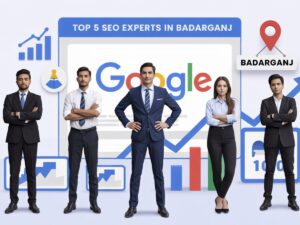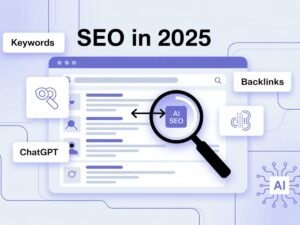In the rapidly evolving digital landscape, optimizing content for AI is no longer just a luxury for businesses; it’s a necessity. Google AI, with its sophisticated algorithms, has transformed the way we think about search engine optimization (SEO). In this blog post, we will explore how Maznur Rahman, an SEO expert from Rangpur, Bangladesh, optimizes for Google AI in Austin, Texas, a rapidly growing hub of tech innovation. This post will delve into the techniques, strategies, and best practices Maznur employs to stay ahead of the curve in the world of AI-powered SEO.
The Intersection of AI and SEO
Maznur Rahman is renowned for his ability to integrate cutting-edge AI strategies into SEO campaigns. In today’s world, businesses cannot ignore the role of artificial intelligence in driving search rankings. Google’s AI-powered algorithms, such as RankBrain, BERT, and MUM, have reshaped the SEO landscape. They understand content in a way that’s far more nuanced than traditional search engines.
Austin, Texas, serves as the perfect backdrop for implementing these AI strategies, as it has emerged as a hub for tech companies and startups. With a burgeoning tech ecosystem, businesses in Austin must adopt AI-optimized SEO strategies to stay competitive.
2. Understanding Google AI & Its Impact on SEO
Google AI is a cornerstone of modern SEO. It encompasses a range of technologies like RankBrain, BERT, and MUM, which have revolutionized how Google interprets content. For example, RankBrain uses machine learning to interpret user queries, while BERT helps Google better understand the context of words in search queries. Google’s MUM algorithm can even process multimodal data, like images and videos, to deliver richer search results.
For SEO professionals like Maznur Rahman, understanding how Google AI works is crucial. It’s not just about using keywords anymore—it’s about creating content that resonates with both search engines and the users’ intent. Google AI ranks content based on its ability to provide a comprehensive answer to a user’s query, using signals like context, relevance, and engagement.
3. Why Austin, Texas Is a Key Focus Area for AI SEO
Austin, Texas, has quickly become one of the fastest-growing tech hubs in the U.S. The city’s vibrant startup ecosystem and the increasing presence of large tech companies make it an ideal location for applying advanced SEO techniques. Austin businesses must optimize for local search to stay competitive, and this requires leveraging Google’s AI-driven algorithms.
Maznur Rahman understands the unique dynamics of the Austin market. By tailoring his strategies to include local SEO techniques while integrating AI-based optimization, he ensures businesses in Austin stay visible in local search results. For businesses in Austin to thrive in the AI-driven search ecosystem, they must adapt to the shifting SEO landscape and embrace AI-enhanced strategies.
4. Maznur Rahman’s SEO Approach to Google AI Overviews
Maznur Rahman employs a comprehensive approach to AI-powered SEO, which is designed to improve search engine rankings while aligning with Google’s AI-based algorithms. Here’s a breakdown of his process:
- Keyword Targeting with AI Focus:
Maznur emphasizes the use of LSI keywords and AEO (Answer Engine Optimization) keywords. By targeting related terms and phrases that users are likely to search for, Maznur ensures that content is contextually relevant and comprehensive. - Content Structuring:
Google AI values well-structured, easy-to-read content. Maznur’s approach includes breaking content into sections, using clear headings, and including bullet points, which enhances readability and relevance for both users and AI. - AI Content Adaptation:
The content is optimized not only for search engines but also for AI algorithms like BERT and MUM, ensuring that it ranks well for a range of queries. This includes creating in-depth content that answers user questions comprehensively. - Natural Language Processing (NLP):
By incorporating natural language processing techniques, Maznur ensures that his content aligns with how Google AI interprets language. This helps in ranking for more nuanced and conversational queries.
5. The Role of LSI and AEO Keywords in AI-Driven SEO
Maznur Rahman integrates LSI (Latent Semantic Indexing) and AEO (Answer Engine Optimization) into his SEO strategy, which are crucial in the age of AI-powered search.
- LSI Keywords: These are keywords related to the primary topic that help Google’s AI understand the context of the content better. For instance, if the primary keyword is “Google AI,” LSI keywords might include “RankBrain,” “BERT,” “AI algorithms,” etc. By using a mix of LSI keywords, the content appears more relevant to a variety of related queries.
- AEO Keywords: Answer Engine Optimization is about optimizing content for featured snippets and answer boxes in Google search results. By strategically answering commonly asked questions using precise, concise language, Maznur ensures that his content ranks in these highly coveted spots.
Incorporating both LSI and AEO ensures higher relevance and visibility in search rankings.
6. Best Practices for Google AI Optimization in Austin
For businesses in Austin, there are several best practices Maznur recommends to fully optimize for Google AI:
- Local Content Relevance:
Content should cater to local audiences. By including region-specific information and incorporating Austin-related terms, businesses can improve their chances of ranking for local searches. - Mobile Optimization:
Google AI prioritizes mobile-first indexing. This means that businesses must ensure their websites are fully optimized for mobile users, from speed to usability. - Structured Data:
Structured data, such as schema markup, helps Google’s AI understand the content’s context and purpose. This is critical for ranking higher in search results. - Voice Search Optimization:
With the rise of voice assistants, businesses must optimize for conversational queries, which Google AI is increasingly prioritizing.
7. Future of SEO with Google AI and LLM Models
The future of SEO will undoubtedly be shaped by Large Language Models (LLMs) like GPT-3 and Google AI. These models are evolving rapidly, and they are capable of understanding the nuances of human language better than ever before.
In the future, SEO will focus more on context, user intent, and content quality rather than merely keyword density. Businesses will need to create more natural, engaging content that Google’s AI can interpret and rank accurately. Maznur Rahman is at the forefront of these changes, ensuring that his clients are always ahead of the curve.
8. Conclusion
In conclusion, Maznur Rahman’s ability to optimize content for Google AI in Austin, Texas, is a testament to his understanding of the rapidly changing world of SEO. His approach is rooted in using AI-driven strategies, integrating LSI and AEO keywords, and keeping up with Google’s ever-evolving algorithms. Businesses in Austin and beyond can learn from his strategies to stay ahead in the competitive world of SEO.
By embracing the future of SEO and integrating AI into your strategy, you can ensure that your content ranks well and provides value to your target audience.
FAQs
Google AI improves search rankings by understanding content and user intent.
Focus on local SEO, quality content, and voice search optimization.
LSI keywords help Google understand content, AEO optimizes for featured snippets.














